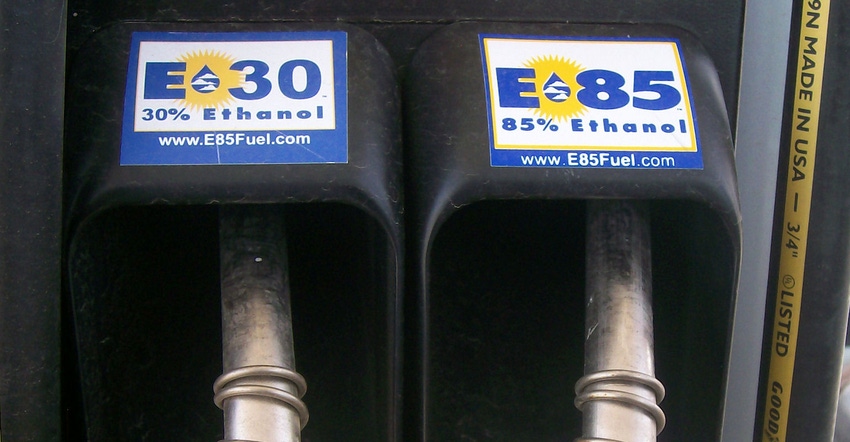March 3, 2020

USDA made two moves to support biofuels last week. Agriculture Secretary Sonny Perdue is directing USDA to acquire alternative fueled vehicles when replacing conventionally fueled vehicles. Additionally, USDA will make $100 million in grants available for the newly created Higher Blends Infrastructure Incentive Program.
Replacing vehicles
USDA owns and operates one of the largest civilian fleets in the federal government. USDA is moving to acquire E85- or biodiesel-capable vehicles that meet USDA mission requirements instead of those that take conventional gasoline. This will occur over time during the normal fleet renewal process. USDA has 37,000 vehicles and replaces approximately 3,000 every year. In addition, Perdue directed USDA to:
Use station locator websites and applications to fuel with E15, E85, and biodiesel where available;
Prioritize the purchase of E15 for gasoline vehicles without E85 capability and the purchase of renewable diesel blends for diesel vehicles without B20 capability; and
For USDA locations that have in-house refueling pumps, coordinate with fuel vendors to acquire and provide biofuel blends, including E15, E85, B20 and higher biodiesel blends, and renewable diesel blends.
These actions have the potential to increase USDA’s annual consumption of E15 by up to 9 million gallons, E85 by 10 million gallons, and biodiesel and renewable diesel blends by up to 3 million gallons. As availability of E15, E85, and biodiesel expands through the nation, USDA has the opportunity to reach these goals and have a significant impact. Where biofuels are available, the USDA fleet is directed to use biofuels.
Higher blends
Through the Higher Blends Infrastructure Incentive Program, transportation fueling and biodiesel distribution facilities will be able to apply for up to $100 million in grants to help install, retrofit, and/or upgrade fuel storage, dispenser pumps, related equipment and infrastructure to be able to sell ethanol and biodiesel.
Cost-share grants and/or incentives will be made available for higher fuel ethanol/biodiesel blends such as “E15” and “B20” (or higher), at vehicle fueling locations, including, but not limited to, local fueling stations, convenience stores, hypermarket fueling stations , and/or fleet facilities, as well as fuel terminals for biodiesel. Prospective participants and stakeholders should expect additional specific program information and requirements to be published by mid-spring which will clarify the application process, eligibility, and how applications for grant funding will be scored.
“Both of these actions underscore USDA is putting our money where our mouth is when it comes to increased biofuels usage. Expanding nationwide infrastructure that offers biofuels and increasing the number of biofuel capable vehicles in our fleet will increase the use of environmentally friendly fuel with decreased emissions, driving demand for our farmers and improving the air we breathe,” Perdue said.
“We are excited to see Secretary Perdue and USDA move expeditiously to implement a key part of President Trump’s plan to repair the damage caused by RFS refinery exemptions that was announced last October,” said Iowa Renewable Fuels Association Executive Director Monte Shaw. “This program is going to assist substantially in helping fuel stations and terminals across the country add the necessary infrastructure of offer higher blends of ethanol and biodiesel.”
The increase in the number of refinery exemptions from the renewable fuels standard (RFS) granted by EPA over the last three years destroyed roughly four billion gallons of biofuels demand and caused a major uproar in farm country, according to the Iowa Renewable Fuels Association. On Oct. 4, 2019, EPA announced a number of steps the Trump Administration would take to repair the damage, including an infrastructure program by USDA.
“As we work with the USDA on infrastructure, we stand ready to work with EPA to begin building on the president’s earlier decision to allow year-round sales of E15 by initiating a rulemaking process to streamline labeling and remove other barriers to the sale of E15,” Shaw said.
Read more about:
Ethanol (1770)About the Author(s)
You May Also Like




